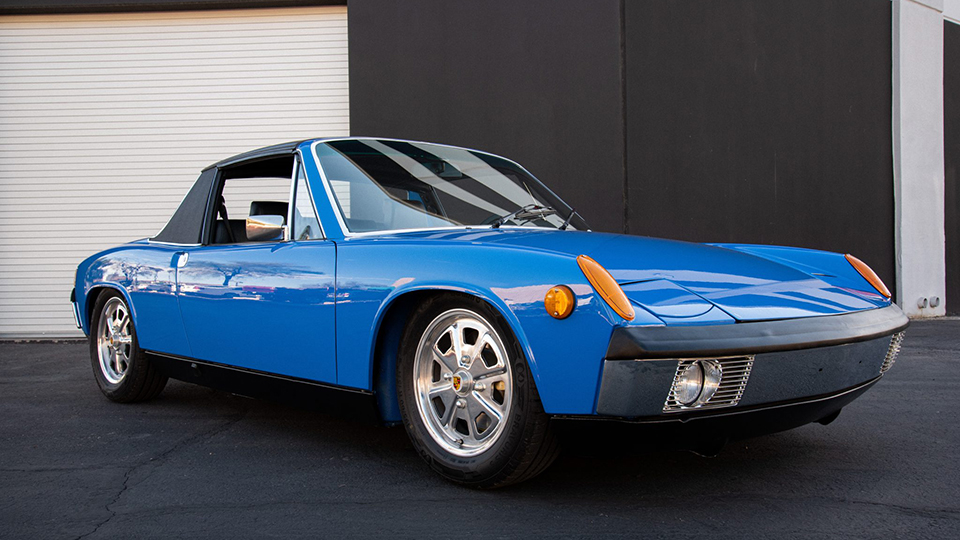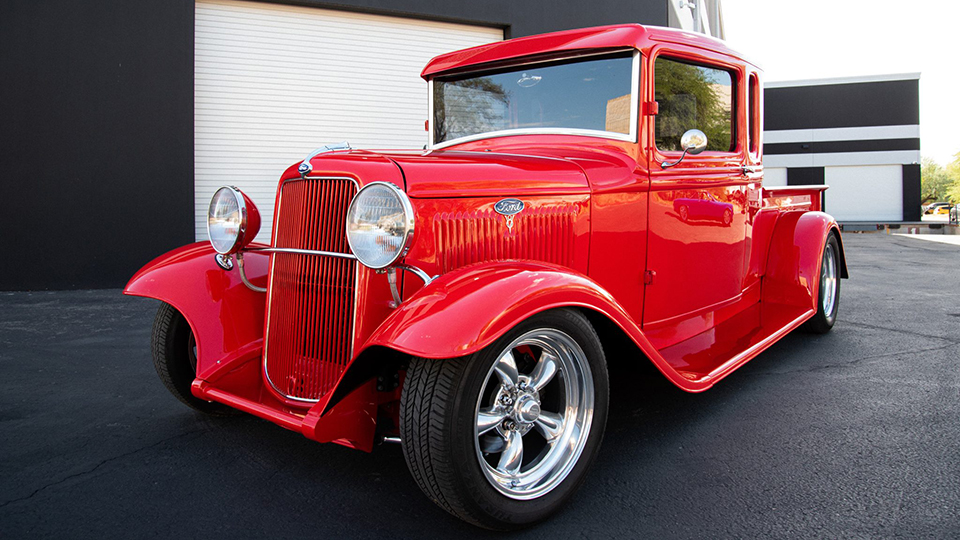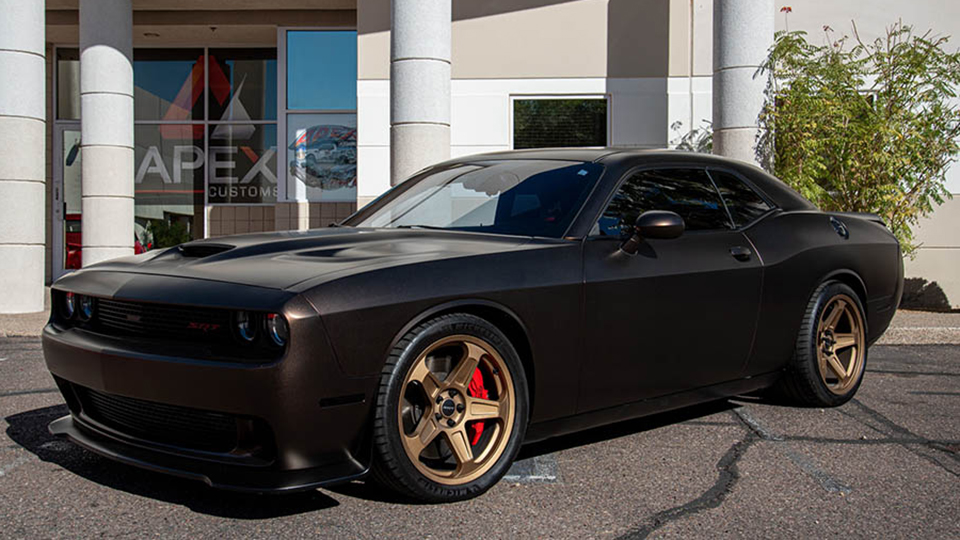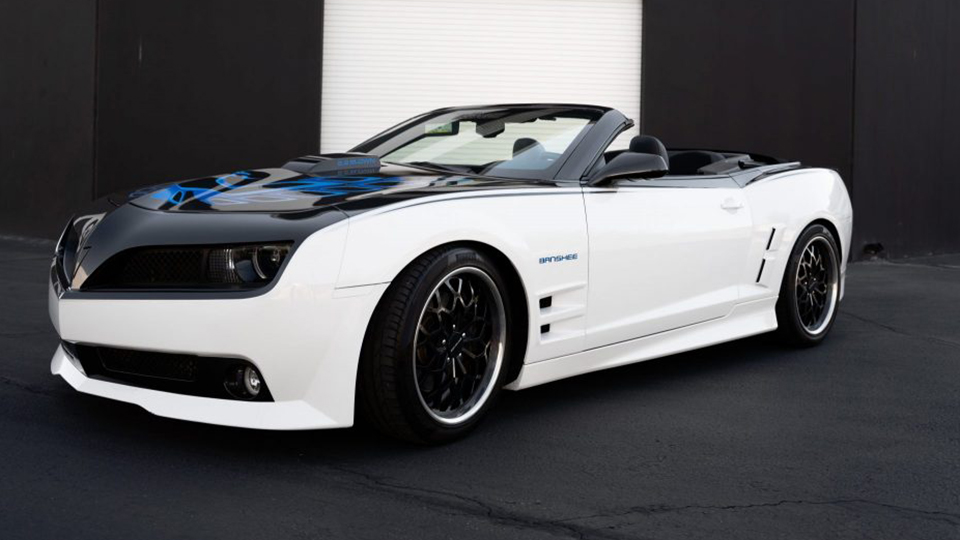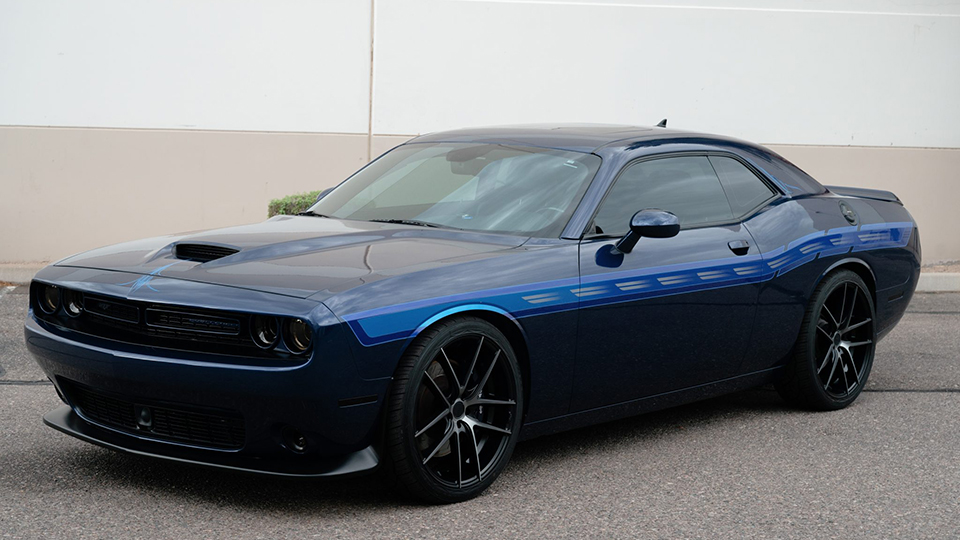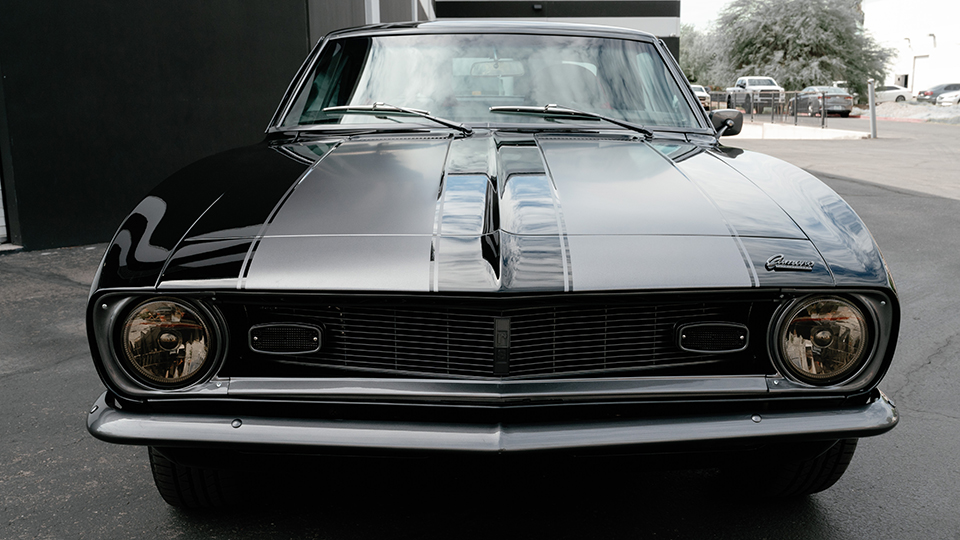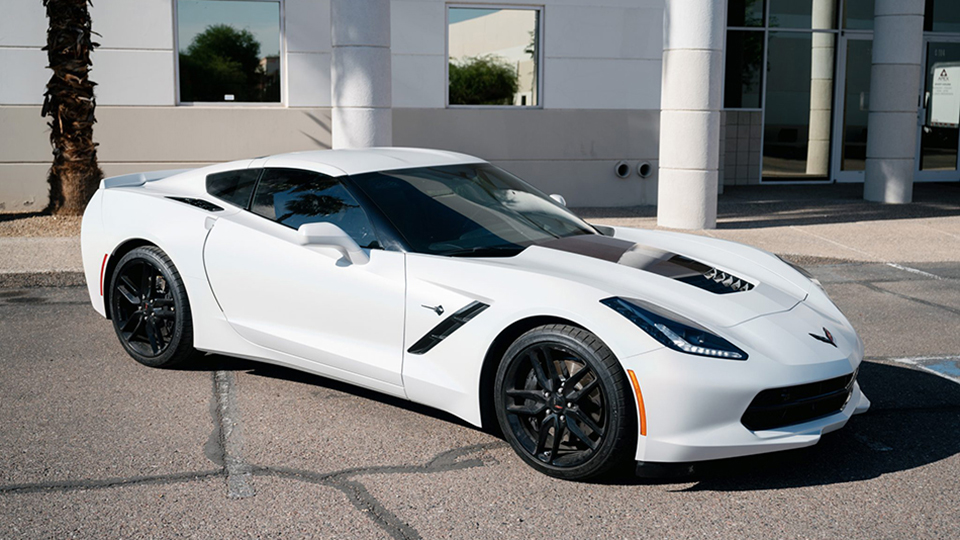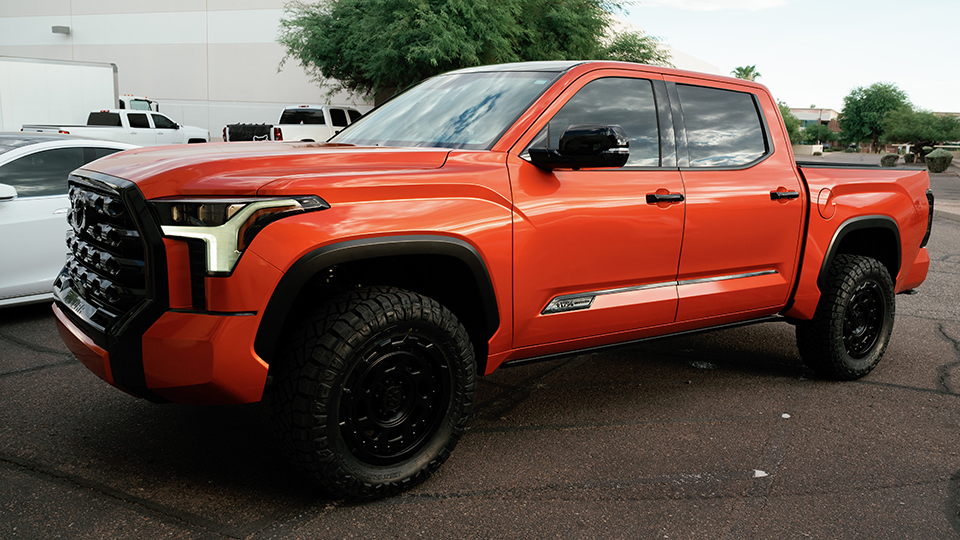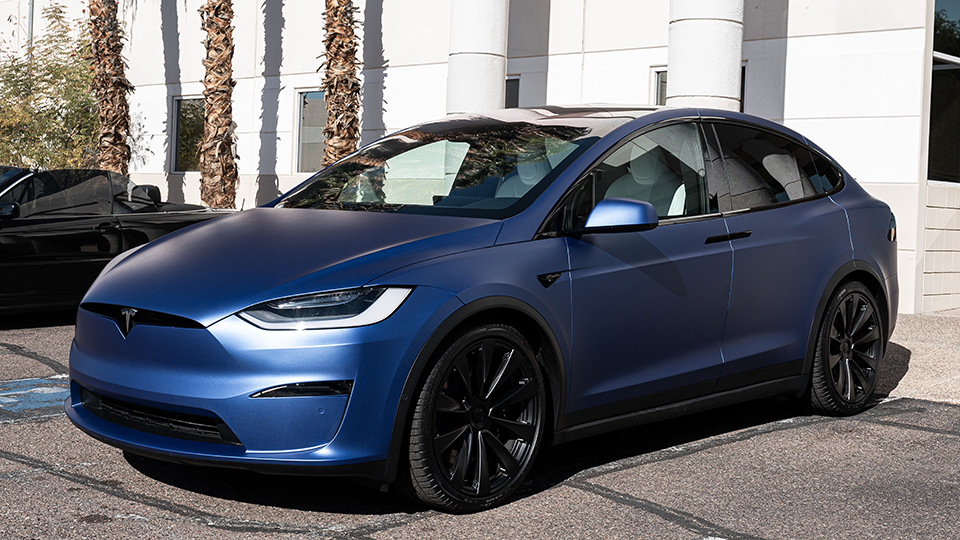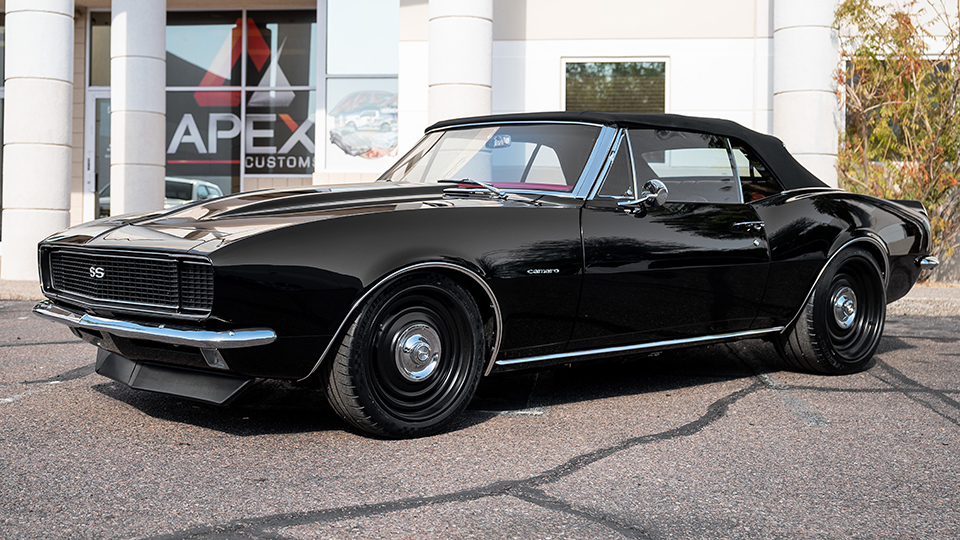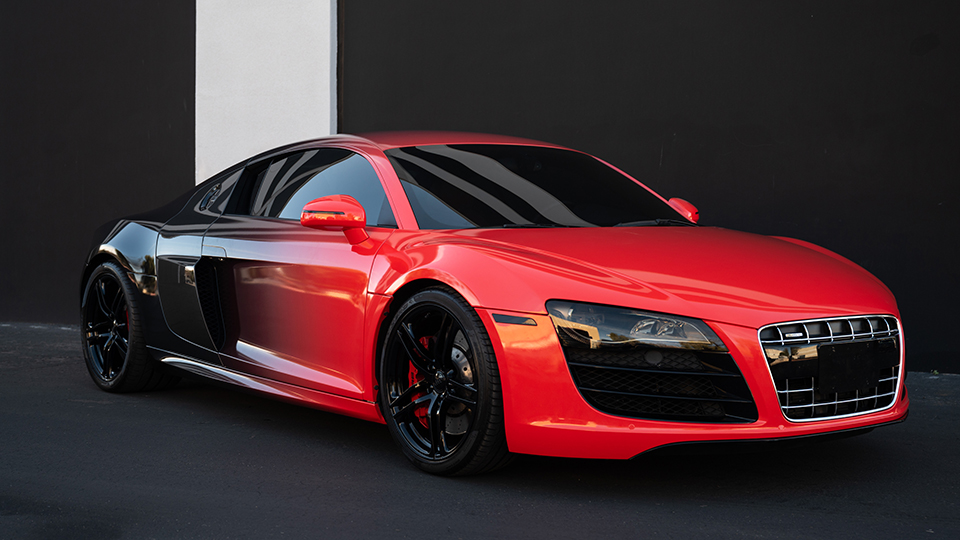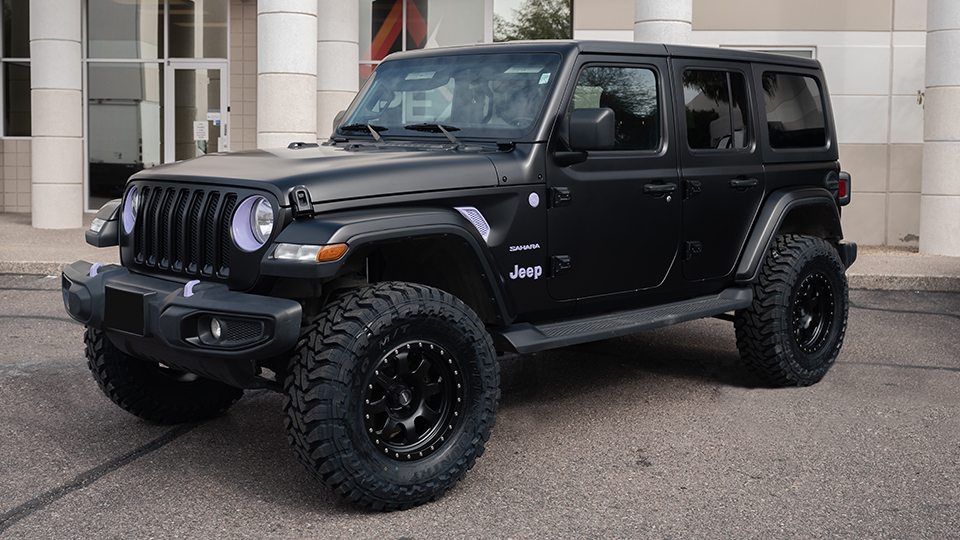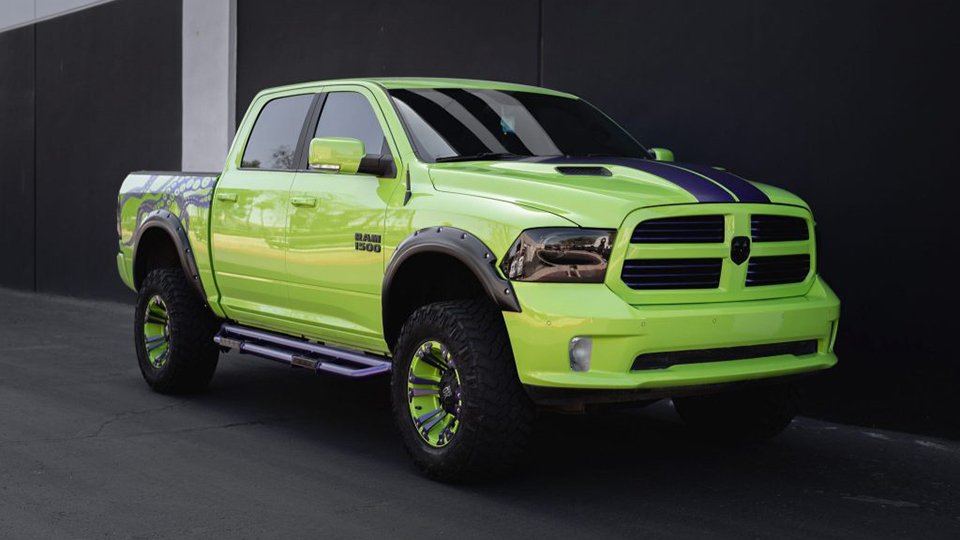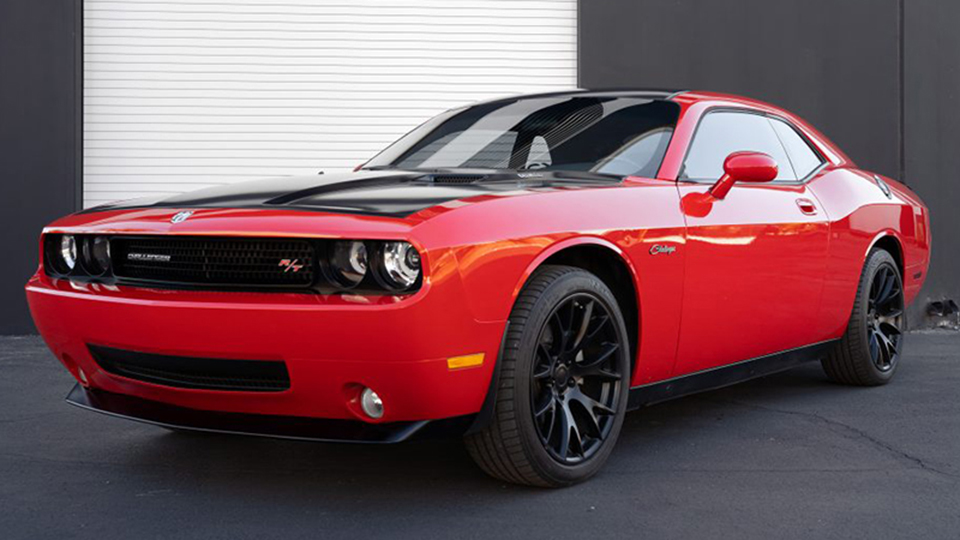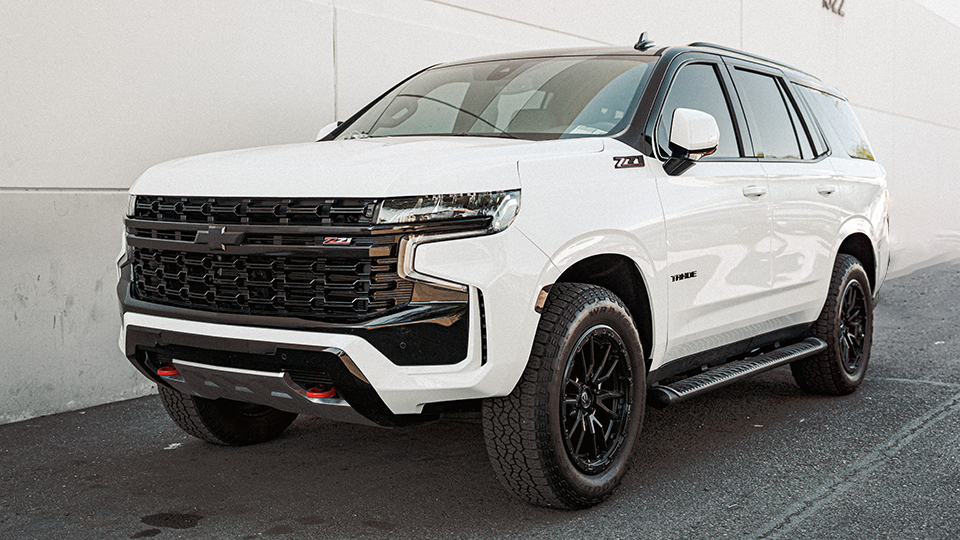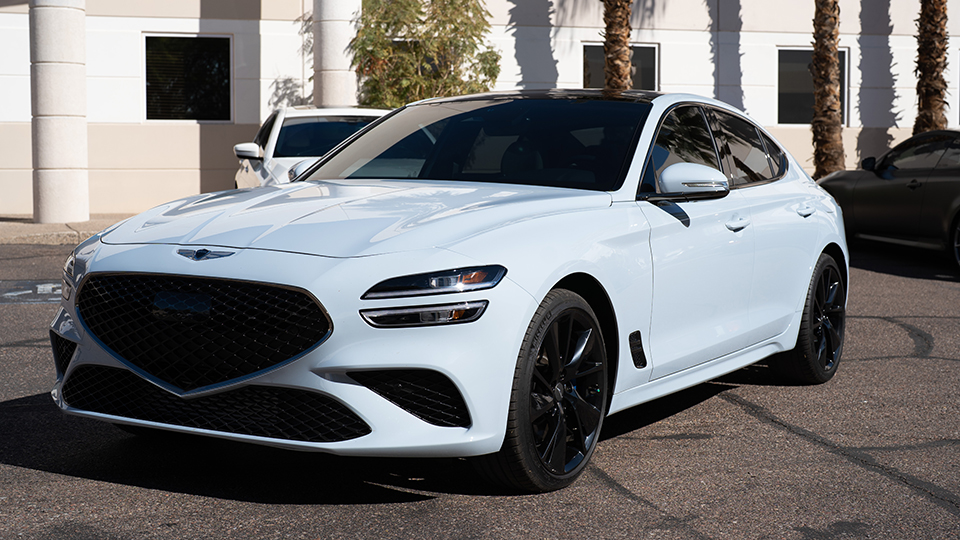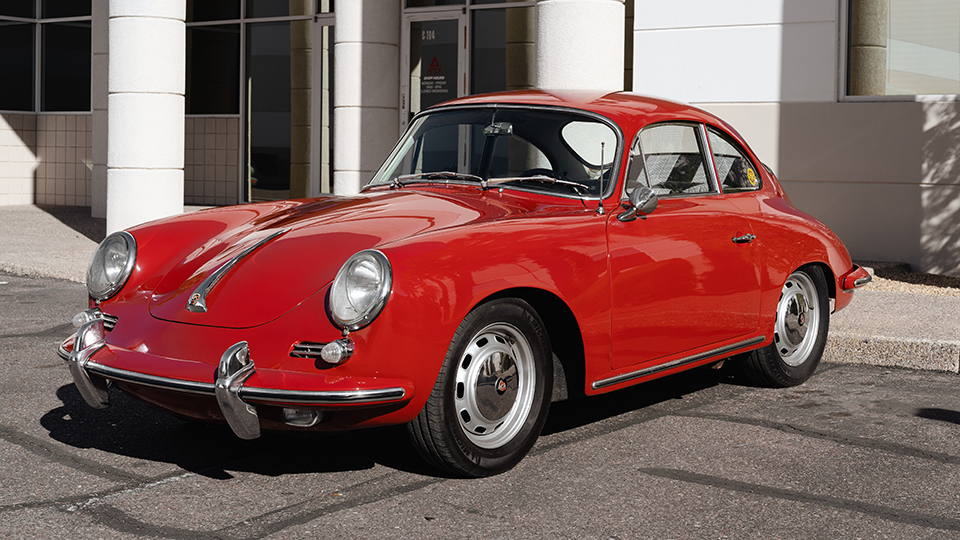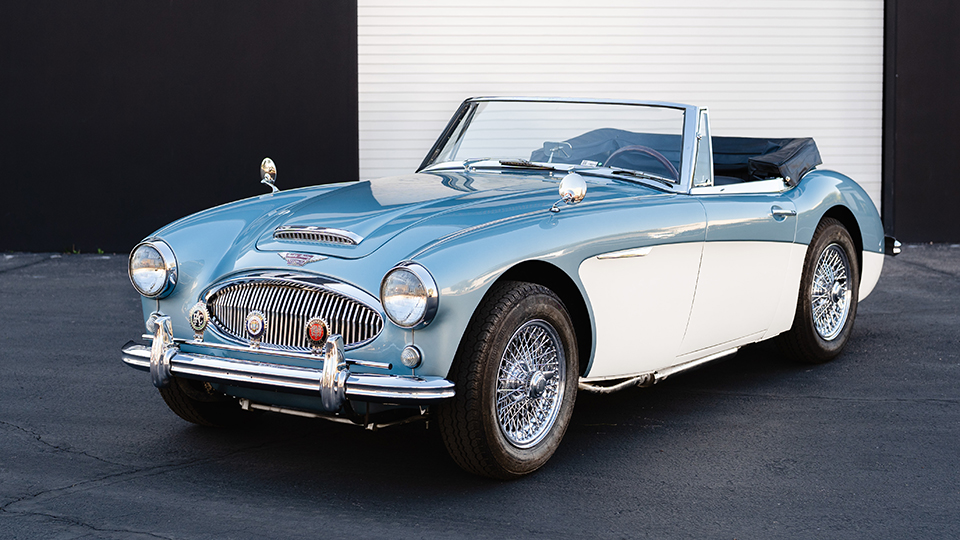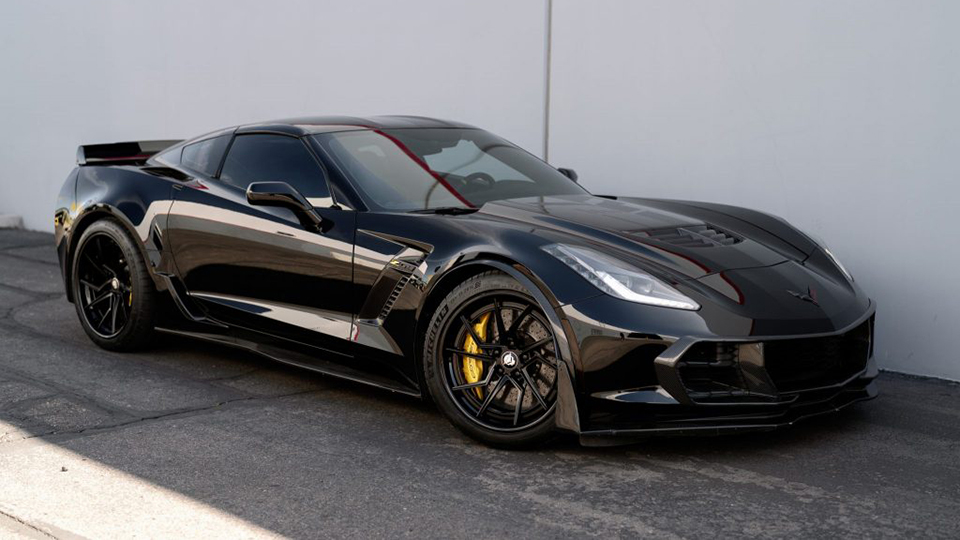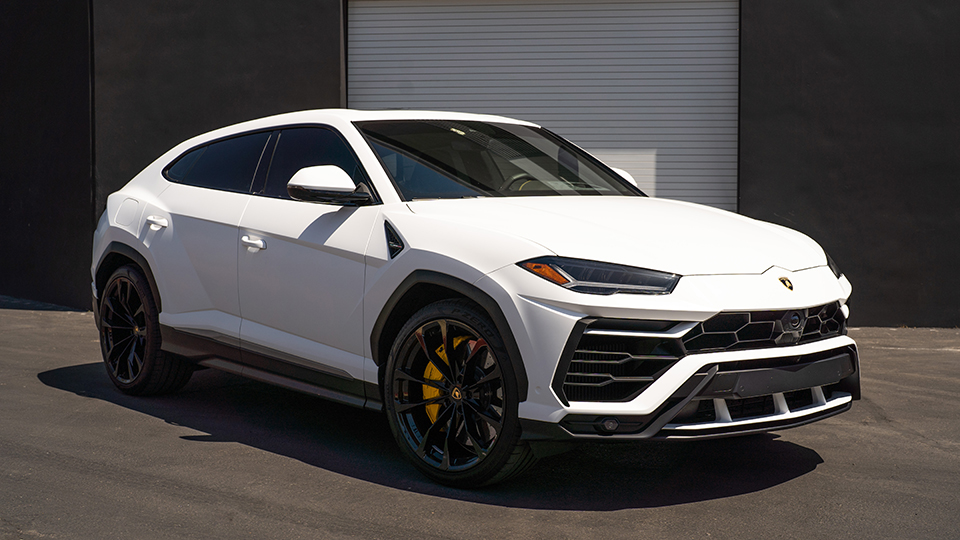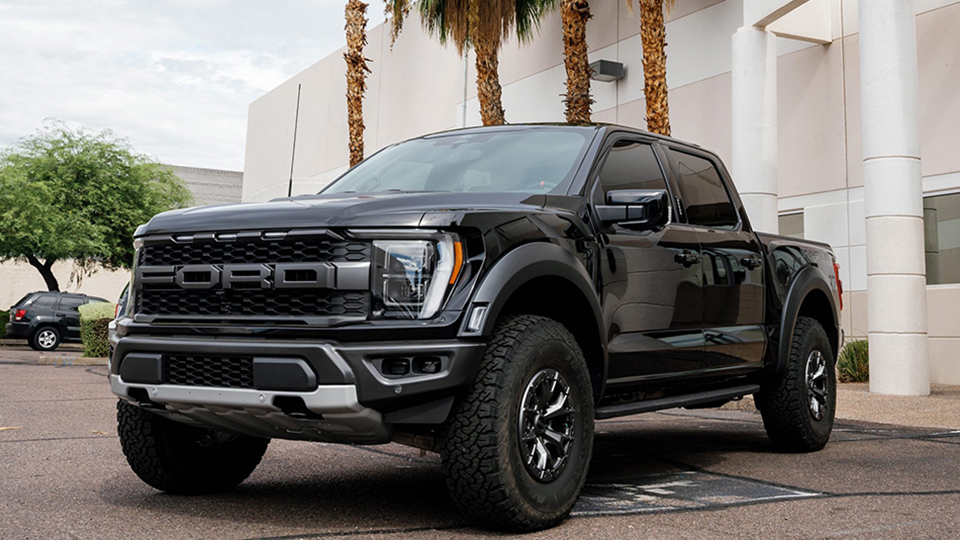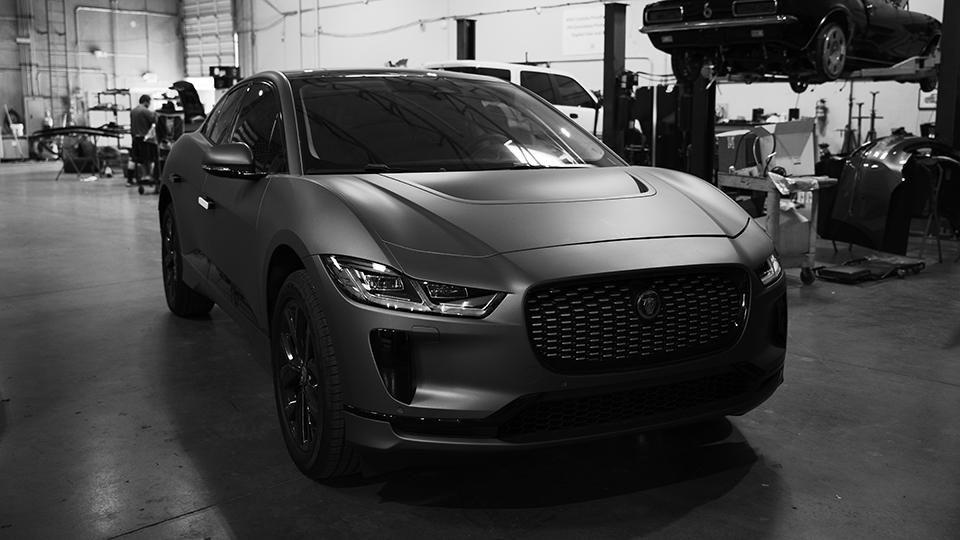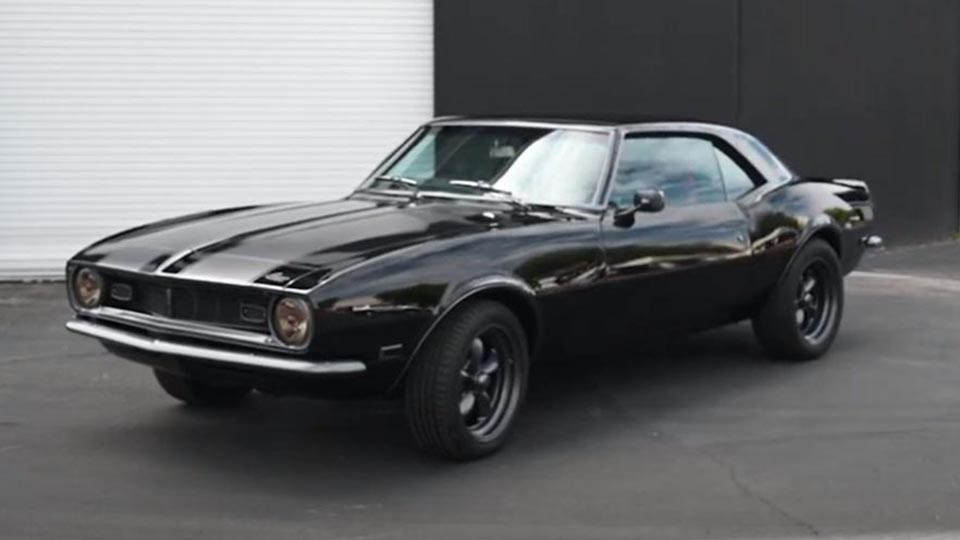Performance Automotive
Unleash the True Power of Your Motor
At Apex Customs Phoenix, we are a full-service custom automotive shop offering a wide range of car, truck, and SUV services to create the custom ride you’ve always dreamed of. We understand that a truly custom ride requires a number of upgrades to build a complete package and one of the most important aftermarket upgrades to your vehicle is a performance upgrade. We offer a wide variety of engine performance upgrades that will take your ride to the next level. The skilled technicians at our Phoenix custom automotive shop can sup up your ride with a number of engine performance upgrades from Cold Air Intakes and Exhausts to engine performance tuning.
When it comes to engine performance upgrades, it’s important to select a shop that understands the full scope of what’s required to improve the horsepower, torque, and responsiveness of your ride. Engine performance is about matching the right parts to the right application. Whether you’re just looking for a little more responsiveness and aggressive sound or looking to add 200 horsepower, we have the expertise and experience to help you effectively plan, source, and install the components that will get you to your desired result.

Performance Services
- Engine Tuning
- Cold Air Intakes
- Performance Exhaust
- Intake Manifolds
- Superchargers
At Apex Customs Phoenix, our technicians will give you the full package. We will provide you recommendations for the best parts and services for your goals and install them with professional accuracy. We’ll help you to choose the best overall set of upgrades that will work to complement each other for the performance you desire.
Engine performance services for Phoenix, Scottsdale, Mesa, Tempe, Glendale, Gilbert, Chandler and surrounding areas in Arizona.
Engine Performance Services
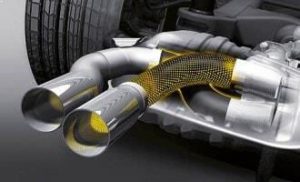
Performance Exhaust
Looking for some better performance and great sound from an aftermarket exhaust? At our Phoenix performance exhaust shop, we have the tools, equipment, expertise, and knowledge to install any performance exhaust system you’re looking to add to your vehicle. A performance exhaust upgrade is typically step two in most performance upgrade packages. An aftermarket performance exhaust will not only allow improved exhaust flow and less restriction in the combustion chamber leading to improved performance, the changes in the muffler design will give your ride that aggressive performance sound you want out of a performance car, truck, or SUV.
At Apex Customs Phoenix, we have partnerships with a number of aftermarket performance exhaust systems such as Magnaflow, Borla, Corsa, and Flowmaster. We can install any performance exhaust system you’re looking for, headers, cat back, mufflers, you name it. Our sales staff can help you choose the best performance exhaust for your car, truck, or SUV, and our expert installers will remove your factory exhaust and install your new performance exhaust will precision and expertise.
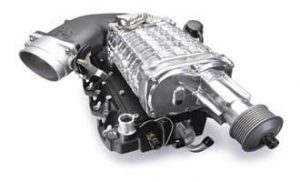
Superchargers
Looking for some real performance? Forced air is the king of performance upgrades and superchargers, also referred to as blowers, are the easiest way to a lot of horsepower and torque. At our Phoenix supercharger installation shop, we have the skills, tools, and expertise to get your ride some serious ponies.
A supercharger \ blower will bolt on to the top of your motor and force cold air into your motor resulting in increased horsepower and torque. We work with a number of supercharger suppliers like Magnuson, Roush, Edlebrock, Whipple, Vortech, Paxton, and ProCharger. Our sales staff will help you choose the best supercharger for your vehicle so you’ll get the most out of your investment. Our expert installers will professionally install your supercharger ensuring every bolt is tightened to factory spec. We’ll then perform an ECU tune on your vehicle using the included supercharger manufacturing tune to recalibrate your motor to accommodate your new parts.
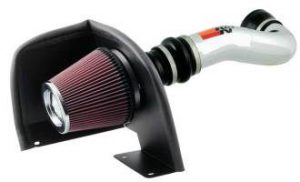
Cold Air Intakes
Looking to improve the airflow into your motor for increased horsepower, torque, and responsiveness? A Cold Air Intake is one of the first steps many automotive enthusiasts take when they’re looking for a performance boost for their ride. Cold Air Intakes help improve the air flow into your engine allowing it to breathe easier and get a better combustion out of your motor. Better combustion, cooler air, and more air flow are the perfect recipe for more horsepower and torque as well as improved gas mileage.
Cold Air Intakes come in a variety of size, shapes, and styles from a number of aftermarket parts manufacturers. At our Phoenix Cold Air Intake shop, we have the expertise, knowledge, and tools to help you select the perfect Cold Air Intake for your vehicle and install it with expert precision.
At Apex Customs Phoenix, we can install any Cold Air Intake system you are looking at for your vehicle. We have partnerships with K&N, Volant, AirRaid, AFE, and Spectre all of whom offer a number of options for your car, truck, or SUV. We can even build a completely custom intake system and cap it with one of the best air filters in the market from AMSOIL. If you’re in the market for a Cold Air Intake system, contact us today and we’ll get you taken care of.
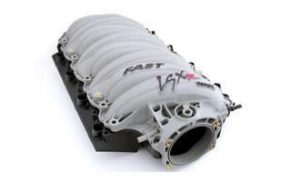
Intake Manifold
Looking for a performance intake manifold upgrade for your car, truck, or SUV? At our Phoenix performance automotive shop, we have the skills, tools, and expertise to install your aftermarket intake manifold with precision. Performance intake manifolds are another step in the engine performance upgrade package. Intake manifolds like the ones from FAST, are engineered to improve the flow and velocity of the air into your combustion chamber which results in improved horsepower, torque, and gas mileage out of your motor.
At Apex Customs Phoenix, we can install any performance intake you are looking to add to your car, truck, or SUV. Our sales staff will help you select the best performance intake manifold for your vehicle taking into consideration any other modifications you have on your vehicle. Our expert installers will then install your aftermarket intake manifold with precision taking care to ensure every bolt is tightened to factory spec.
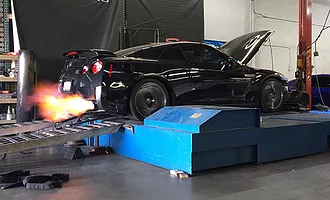
Dyno Tuning
At Apex Customs we offer custom dyno tuning on our state of the art Mustang Dynomometer. Our MD-1750 Mustang Dyno is the largest Dynomometer available on the West Coast capable of up to 3,000 horsepower and 250 MPH. While a handheld tune can get you started, there is no substitute for a custom dyno tune. Every vehicle and driver is unique. Your engine's performance can be impacted by even the smallest environmental variables such as temperature and humidity, let alone any custom performance parts you add to your ride. Vehicle manufacturers and handheld tuning developers simply can't account for all of the potential variables your motor is faced with. As a result, OEM and handheld programming of your vehicle ECU will always be detuned leaving your vehicle far short of its true potential.
At Apex Customs we work with a variety of custom tuning software from HP Tuners to EFI Live. Our expert tuners will hone in your ECU programming, run several test runs on our Mustang Dyno to ensure everything is perfectly in sync, and unleash the true power of your motor! With every Dyno run we provide before and after Dyno graphs and results so you have the scientific evidence of your vehicles true performance.
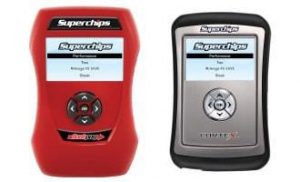
Handheld Tuning
Are you looking to unleash the true power potential of your engine? An engine tune is one of the best ways to improve the performance of your motor, a necessity if you plan to upgrade any of your factory engine parts to aftermarket performance parts. Anytime you add new performance parts, it’s critical that you adjust your engines tuning parameters to account for the changes to the air/fuel mixture. A handheld tuner is a perfect solution as it allows you to re-tune your ride to new parameters every time you swap in a new part.
At our Phoenix engine tuning shop, we have the tools and expertise to help you unleash the true power of your car, truck, or SUV. Our sales staff will help you select the best engine tuner for your application. We have partnerships with Superchips, DiabloSport, SCT, and Hypertech to provide you with a wide range of engine tuning options. Our expert installers will use the handheld tuner to help you dial your motor in and unleash the true performance potential of your car, truck, or SUV.
#enginetuning
Engine Tuning Service
Engine tuning is one of the most important upgrades you can perform when you're looking to improve the performance of your vehicle. When car manufacturers develop the engine parameters used by the computer to control the fuel, air, and exhaust timing of your vehicle, they limited by regulations that require them to stay within specific limits. Additionally, they program their engine control models with the understanding that the vehicle will be operating in a wide range of climates, driving habits, and driver preferences. As a result, there is often a significant amount of potential engine performance that is left on the table. An engine control module tune will help you unleash that additional horsepower and torque.
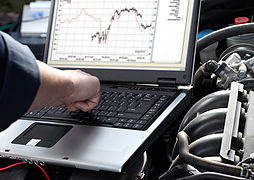
Another factor that makes an engine tune an important upgrade to include in your performance upgrade package is, engines are finely tuned by the manufacturer to exact specifications of the parts installed when the car is assembled. Any time you swap out or change factory parts to aftermarket performance parts, it's critical that you update the parameters the engine's computer uses to calculate air/fuel ratios and ignition timing. If you don't tune your vehicle after swapping out factory parts for performance parts, you not only leave potential power on the table and ruin your fuel mileage, you risk serious irreversible damage to your engine.
The engine control module also referred to as the ECM or ECU, is responsible for calculating the amount of fuel to squirt into the piston chamber to produce the ideal combustion required for a motor to produce power. In addition to fuel calculations, the ECU controls the timing of the ignition spark produced by the spark plugs to ignite the air/fuel mixture in the combustion chamber. In order to make these calculations, the ECM relies on a series of mathematical tables combined with data feedback it receives from the oxygen sensors which measure the motors exhaust from the combustion process and mass air flow sensors which measure the amount of air that comes into the motor through the intake system.
When you modify parts like the intake system with a cold air intake, the exhaust with a header system or performance exhaust, or add a forced air induction system like a supercharger, the data stored in the mathematical tables of the ECU are no longer accurate. This confuses the engine control module as it expects to read certain fuel richness from the oxygen sensors in the exhaust based on it's anticipated calculations. When the engine control module see's inaccurate reads, it will compensate by using more or less fuel than is necessary which results in rich and lean scenarios which will damage parts like your catalytic converter, pistons, and engine block and as results in an underperforming engine that wastes fuel and reduces power.
#coldairintake
Cold Air Intake Installation
A cold air intake is an aftermarket performance upgrade you can install on your car, truck, or SUV to increase the horsepower and torque of your motor. Short Ram Intake, Mega Ram Intake, Cool Air Intake, Cold Air Intake, Aftermarket Intake, CAI, and cone intake are some of the common terms used for this engine performance modification, but they all come down to the same basic idea: Remove your overly restrictive stock (factory) air box and filter and replace it with an aftermarket system.
A motor produces power by taking air (oxygen), mixing it with a combustible fuel, and introducing an ignition spark to produce power. By increasing the amount of air flow into your motor, you can correspondingly increase the power output by the combustion process. Adding additional fuel to the combustion process is easy, all you have to do is install larger injectors and/or change the programming of your vehicles ECU. Increasing air flow in your motor is more challenging which is where a cold air intake comes into play.
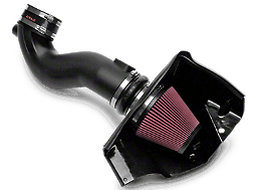
A cold air intake system increases airflow into your motor by dropping the temperature of the air sucked into the motor. Colder air, is denser air which results in more oxygen within a smaller volume of air. More oxygen in the combustion process means more power. Another benefit of cold air intakes comes from the reduction in air flow resistance. Cold air intake manufacturers have gone to great lengths to remove any restrictions to airflow throughout the intake piping. The interior of the piping in a cold air system has been polished and ever turn in the piping has been tuned to reduce air flow resistance. Cold air intakes also decrease air turbulence within the piping which also improves airflow and volume into the combustion chamber.
The most common strategies aftermarket cold air intake manufacturers utilize to improve air flow through a CAI are: increasing the diameter of the air intake filter and piping, smoothing the interior of the intake to reduce air resistance, providing a more direct route from the air source to the engines intake manifold, using a more efficient and less restrictive air filter, and tuning the length and curves in the intake piping to provide maximum airflow at certain engine speeds.
When it comes to increasing airflow into a motor to improve performance, there are many options. Superchargers, turbochargers, and cold air intakes all increase airflow resulting in increased horsepower and torque. Of these options, a cold air intake is an easy and affordable solution to implement without overly impacting your fuel consumption. CAI’s are a cheap alternative for improved performance when you have the money or time to invest in a major engine modification like a turbo-charger. They are also a critical component to support other modifications such as a turbocharger, supercharger, and performance exhaust system. If you plan on doing a larger upgrade, a cold air intake is a great modification to start with now that will also support your larger engine performance modifications later.
Benefits of Cold Air Intakes
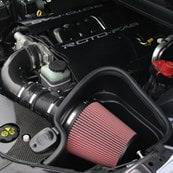
Enhanced Sound
A cold air intake offers on unmatched aggressive sound that true automotive enthusiasts crave. There is nothing better on a performance car, truck, or SUV than a roaring engine sound to show everyone how capable your vehicle is under the hood. Cold air intakes allow more air to course through the engine and typically remove restrictive sound dampening systems to produce an engine sound that most can lovers find thrilling. If you’re not a fan of the increased noise, there are aftermarket intake systems which can muffle the nose while still providing the increased performance and engine efficiency.
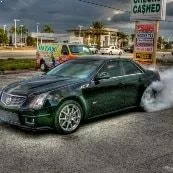
Improved Power and Acceleration
f you install a cold air intake from a reputable manufacturer such as K&N, Volant, or Airaid, or Spectre, your car, truck, or SUV can experience increased horsepower. Reputable manufacturers invest in the research and development in the cold air intake systems they produce to ensure they have a measurable improvement over your stock air intake system. The level of increased horsepower you can expect from a cold air intake installation varies from vehicle to vehicle due to the interplay of other engine components. Typically cold air intakes result in a 5 to 20 horsepower increasing depending on the vehicle and engine size. If you are planning additional modifications such as a performance exhaust and supercharger, a cold air intake could compound the horsepower improvements.
Cold air intake can also improve your motors responsiveness during acceleration thanks to the increased air available for combustion with an aftermarket intake system. With the additional air available, your motor is capable of reaching your desired speed quicker than a stock intake system on a car. Anybody who enjoys racing cars understand how much faster acceleration improves the enjoying of your car, truck, or SUV.
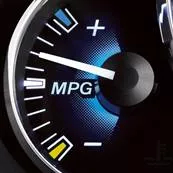
Increased Fuel Economy
Motors rely on a perfect mixture of air and fuel in order to produce the combustion explosion required to power your car, truck, or SUV. If your vehicle is not getting the air it requires to create the ideal air/fuel ratio for combustion, your vehicle will consume more fuel to compensate for lack of oxygen.
Car, truck, and SUV manufacturers design the factory intake system to be quiet rather than fuel efficient. As a result, they tend to incorporate more fuel into the air/fuel mixture to still produce the desired power. By opening up your air flow with an aftermarket intake system, your motor can consume more oxygen which translates to improved MPG’s.
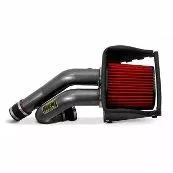
More Effective Filtration
Motors rely on a perfect mixture of air and fuel in order to produce the combustion explosion required to power your car, truck, or SUV. If your vehicle is not getting the air it requires to create the ideal air/fuel ratio for combustion, your vehicle will consume more fuel to compensate for lack of oxygen.
Car, truck, and SUV manufacturers design the factory intake system to be quiet rather than fuel efficient. As a result, they tend to incorporate more fuel into the air/fuel mixture to still produce the desired power. By opening up your air flow with an aftermarket intake system, your motor can consume more oxygen which translates to improved MPG’s.
Supercharger Upgrades
What is a supercharger?
Starting from the early days of Henry ford and his motorized horse carriage, automotive enthusiasts, engineers, and speed junkies have been searching for ways to increase the power output of the internal combustion motor. The first attempts at increasing power was to simply place a larger engine in the vehicle. However larger engines aren’t always practical, they typically cost more to build and maintain, weigh more, and are difficult to fit into the engine bay of a vehicle.
Thankfully there is a better way to add power to your engine that will not only add ponies and rubber melting torque, but will improve the efficiency and provide you instant on power. You can accomplish more power by simply forcing more air into the combustion chamber which when supplemented with a little more fuel, is a recipe for the neck snapping power you’ve been dreaming of.
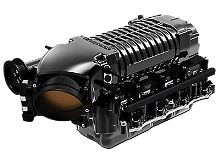
Forced induction is without a doubt the best way to improve the horsepower and torque of your car, truck, or SUV. Forced air literally supercharges engine performance by compressing the air flowing into your motor resulting in dense, oxygen rich air in the air/fuel ratio. This allows the motor to burn more fuel and due more work, which results in increased horsepower and torque.
There are two types of forced induction upgrades that can add boost to your motor to increase power. The first is a turbo charger which utilizes a turbine spun by the exhaust gas from the combustion process to compress the incoming air. The second forced air induction upgrade is a supercharger which is driven mechanically by a belt, gear, shaft, or chain which is connected to the engine’s crankshaft. As the crankshaft turns on a motor, the mechanical connection to the supercharger in turn turns a series of screws in the supercharger which compress the air that is sucked in through the induction system.
How does a SuperCharger work?
The typical four-stroke motor dedicates one stroke to the process of air intake. As the piston moves down in the combustion chamber, a vacuum is created which sucks air into the chamber at atmospheric pressure. Once the air is drawn into the motor, it is combined with fuel to form a charge which is a packet of potential energy which can be transformed into useful kinetic energy through the chemical reaction known as combustion. A spark plug is used to “spark” or initiate the combustion process which is essentially a chemical reaction. As the fuel is oxidized in the process, a good amount of energy is released which in turn drives the piston down and creates a reciprocating motion on the crankshaft which is eventually transferred to the wheels.
In order to boost the performance of your engine, you essentially need to create a more powerful explosion in the combustion changer. Unfortunately, you can’t just add more fuel to the combustion mixture for a more powerful explosion, you need more oxygen to go along with it. Combustion requires a 14 part to one part fuel mixture which means you need a larger volume of oxygen in your mixture to create a more powerful explosion. The bottom line for an engine performance upgrade is you need more air for more power.
Enter the supercharger. A supercharger will increase the oxygen levels in your engines combustion chamber by compress the air drawn in through the intake system to above atmospheric pressure without creating a vacuum. By compressing the air, the supercharger is providing a “boost” through the use of addition air and fuel added to the combustion charge. On average, a supercharger will add an average of 45% more horsepower and 30% more torque to your car, truck, or SUV.
Superchargers, unlike turbocharger, utilize the mechanical power created by the crankshaft to drive the air compression screws. Connected to the crankshaft through an accessory belt or chain, the supercharger contains an internal compression gear with rotors to compress air into a smaller space before discharging it into the engine’s intake manifold. The benefits of a supercharger over a turbo charger is it’s instant power characteristics. Because the compression blades are connected to the crankshaft, the second a combustion takes place, the screws of the supercharger are turned. A turbocharger in contrast relies on the exhaust gases exiting the combustion chamber to spin the internal compressor which results in a delay before the compressed air enters the combustion chamber. This is often referred to as “turbo lag”.
To pressurize incoming air properly, a supercharger compressor screw must spin more rapidly than the engine itself. This is accomplished by utilizing larger drive gears than the compressor gear which allows superchargers to spin at speeds as high as 50,000 to 65,000 (RPM). A supercharger compressor that spins at 50,000 RPM translates to a boost of approx. six to nine pounds per square inch. Atmospheric pressure at sea level is 14.7 psi, therefore the typical boost created by a supercharger equates to approx. 50% more into to the engine.
When a supercharger compresses the intake air coming into the motor, the air gets hotter causing it to lose its density. Lack of density results in less expansion during the ignition. In order for a supercharger to work at peak efficiency, the compressed air created by the supercharger needs to be cooled. Air cooling in a supercharger is accomplished through the use of an intercooler. An intercooler comes in two basic designs, air to water intercoolers and air to air intercoolers. Both intercooler designs work exactly like the radiator in a car where cool air or water is sent through a series of pipes and tubes to cool the air. As the hot, compressed air exits the supercharger and encounters the cooler pipes, it cools down resulting in increased air density before entering the combustion chamber.
Performance Exhaust Installation
Considering a performance exhaust system? Most car, truck, and SUV manufacturers leave a good amount of room for improvement when it comes to horsepower and torque. Vehicle manufacturers are subject to laws and regulations that require the cars, trucks, and SUVs they manufacture are compliant in every market they are sold in. Additionally, manufacturers have to factor in production costs that could drive up the sticker price of a new car and they need to design cars which are attractive to all potential customers. With some minor modifications to your stock vehicle parts you can boost engine performance gaining valuable horsepower and torque.
An aftermarket performance exhaust system is one of the first upgrades car enthusiasts turn to in order to free up some of the power in your motor. A performance exhaust will provide a fast and more efficient path for the exhaust gases to escape your engine. When you motor can breathe better, the engine control module is able to push more fuel and air into the combustion chamber which results in more power and responsiveness when you hit the gas pedal.
When considering an aftermarket performance exhaust system, one key feature to look for is mandrel bent tubing. There are two primary methods used when bending exhaust piping to fit your vehicle. The most common method used due to its lower costs is the “crush-bend” technique. The problem with this method is it creates crinkled areas in the pipe which not only decrease the diameter of the pipe but also produce possible restrictions in exhaust flow. This increases back pressure in the exhaust system which results in a reduction in power and fuel mileage. The second and more expensive method for bending exhaust piping to fit a vehicle is called “mandrel bending”. Mandrel bends are smooth so the pipe remains a consistent diameter throughout the exhaust system. Additionally, mandrel bent tubing eliminates potential exhaust flow restrictions from kinks and ripples in the piping.
Types of Aftermarket Exhaust Systems:
-
Axle-Back: Replaces the exhaust system from the rear axle to the muffler and has the least effect on performance and fuel economy.
-
Cat-Back: A cat-back exhaust system replaces the stock exhaust system from the catalytic converter back to the muffler, and has a moderate effect on fuel economy and engine performance.
-
Header-Back: A header-back exhaust replacement completely removes your stock components and replaces them with aftermarket options. This has the greatest impact on performance and fuel economy.
Benefits of a Performance Exhaust
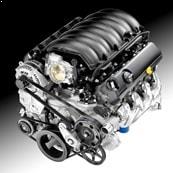
Increased Engine Power
The most popular reason car enthusiasts choose to invest in an aftermarket exhaust system is the increase in horsepower and torque it will provide. While a performance muffler exhaust system won’t deliver the same kind of power gains you’ll enjoy from a supercharger or turbocharger, it does have the potential to add several horsepower to you motor by reducing back pressure. While some back pressure in the exhaust system is necessary, too much can stifle the breathability of your engine which results in reduced performance. Typically, you can expect about a 10% increase in torque and horsepower from a performance exhaust installation.
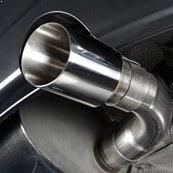
Performance Sound
The second most popular reason car enthusiasts consider an aftermarket exhaust upgrade is the sweet sweet exhaust notes produced by a properly tuned exhaust. An aftermarket exhaust can vastly improve the sound and tone of your engine. Vehicle manufacturers go to great lengths to reduce the sound of a car, truck, or SUVs engine because the majority of car buyers prefer a quiet vehicle. Performance exhaust manufacturers on the other hand, take the opposite approach, they engineer their systems to let your motor purr as it was intended to. There’s something about being able to hear and feel the rumble of your motor than sends shivers of delight up the back of a true car enthusiasts.
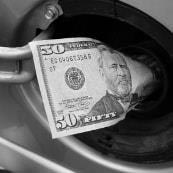
Increased Fuel Economy
One of the last things you may be factoring into your performance exhaust buying decision is increased fuel economy. While it may seem counter intuitive, aftermarket exhaust systems do have an impact on the amount of fuel your engine will consume. While not huge, you can expect to enjoy a boost in fuel economy with your aftermarket exhaust system thanks to the reduction in back pressure in the exhaust system that helps your engine perform more efficiently. If you’re just going with an axle-back exhaust or muffler replacement, you won’t remove enough restriction to see much of a boost. However, a cat-back or full exhaust and header replacement will certainly boost your miles per gallon of fuel.
Engine Performance Q&A
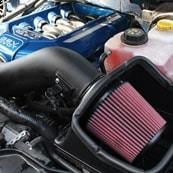
Can a cold air intake give my engine too much air flow?
No, a motor can only draw in the volume of air that is allowed by the motors stroke, bore, and number of cylinders. A performance intake system and air filter is not capable of increasing the volume of air the engine takes in, it can only change the density and velocity of the air flowing into the engine.
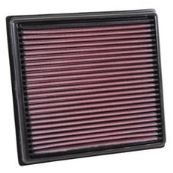
Does higher filtration mean a better performing intake system?
While 99% filtration efficiency is a very good achievement, air filter efficiency is just one measure of filter performance. There are several measures that you need to consider when evaluating a performance intake system including restriction, service life, and capacity. These addition measure factor in the velocity capacity of air flow, how much dirt an air filter can hold, and the life of an air filtration system. When a performance air filtration manufacturer claims their filters consistently achieve 99% filtration efficiency, it typically means they are sacrificing other performance characteristics to achieve that filtration rating. Generally a filter which achieves 99% filtration is sacrificing air flow capacity and velocity resulting in restrictive properties that limit your engine's performance capabilities.
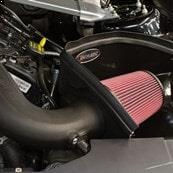
How will a cold air intake system impact my vehicle’s fuel economy?
Because performance cold air intake systems allow the engine to breathe better and reduce the heat in the air flowing into the motor resulting in more oxygen density, cold air intake systems generally improve gas mileage. Keep in mind that there are several other factors to consider including other performance parts such as a supercharger that you have installed on your vehicle. If you’re aim is to boost engine power, you’re typically looking to burn more fuel in exchange for more horsepower and torque. As a result, your gas mileage will go down. However, if you only install a cold air intake system on a stock car, truck, or SUV, you can generally expect to get more miles out of every gallon of gas.
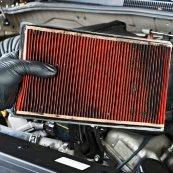
How often will I need to clean and re-oil my performance air filter?
Maintaining your performance air filter is one of the most important tasks required for not only extending the life of your performance intake investment, a dirty filter will impact engine power and fuel mileage. When your air filter is dirty, it will restrict the airflow into your motor and degrade the life of the air filter. Driving conditions play a key factor in how often you will need to maintain your filter. Most manufacturers recommend you clean and inspect your air filter at least every 25,000 miles, however, if you’re driving in terrain that has a lot of dust and dirt contaminants, you should inspect your filter more frequently.
Remember to use manufacturer approved air filter cleaning kits. Most aftermarket performance air filter manufacturers sell a cleaning kit that will include the oil which is specifically designed to match the materials used in the air filter. K&N provides a good step by step guide on air filter cleaning steps here: How to Clean K&N Air Filter Products
If you are in the Phoenix, Tempe, Scottsdale, Mesa, Glendale or surrounding area, you can purchase an air filter cleaning kit at our shop.
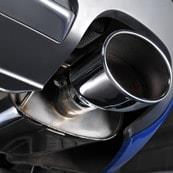
Will a performance exhaust system give me better gas mileage?
Yes, a more efficient motor uses less fuel which in turn will improve your miles per gallon under normal cruising conditions. When an exhaust system incorporates proper diameter, mandrel bent exhaust tubing with a flow through design, the exhaust gases from the combustion process will exit faster with a higher temperature than factory exhaust systems. As a result, you will enjoy a boost in horsepower when you plant your foot and better gas mileage when you’re cruising on a road trip. The larger the vehicle, the bigger the engine, the higher the load, which results in greater savings in fuel consumption.
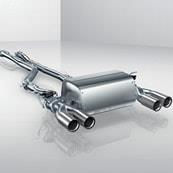
Why do some performance exhaust systems cost more than others?
The cost of a performance exhaust system is highly dependent on the metals used in the exhaust manufacturing process. The most commonly used metals in cheaper exhaust systems are rust prone mild steel, aluminized steel, or inferior 400-series stainless steel. While this results in cost savings up front, these metals result in a low-quality product that will rust away or fall apart when exposed to the harsh elements of the road.
High quality performance exhaust manufacturers, like BORLA, only use authentic stainless steel which not only costs more foot, but also require higher manufacturing costs. The process of cutting, bending, and hand welding genuine stainless steel requires expensive special equipment. In addition, the highest performing exhaust systems require substantial investments in research and development to engineer products that will consistently perform better and last longer.
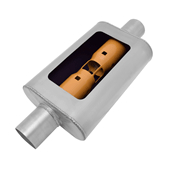
How does a performance exhaust system impact sound and performance?
Aftermarket performance exhaust systems incorporate a straight-through design which increases exhaust gas velocity and allows air to run through the engine uninterrupted. The process removes exhaust flow restrictions so the cylinders can evacuate faster which allows incoming oxygen flow to enter the cylinder faster thereby producing more power. The result of this entire process, paired with modifications to the design and sound dampening materials used in the muffler, products an enhanced exhaust tone which gives you the performance automotive sounds car enthusiasts love.
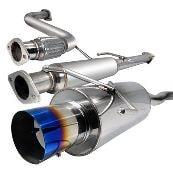
How much horsepower can I expect to gain with a performance exhaust system?
A motor is an air pump, performance exhaust systems allow an engine to pump and flow more uninterrupted air through the system. The result of more free flowing air is the potential for more horsepower and torque. The actual horsepower gains will depend on your fuel system’s ability to provide enough fuel to match the additional air flowing through your engine. Typically, you can expect 5 to 15% more horsepower out of a performance exhaust system. To get the most out of your aftermarket exhaust system, you should match your performance exhaust system with a cold air intake and engine tune.
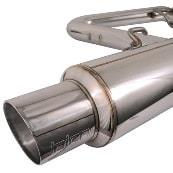
Is a bigger pipe and muffler better for performance?
No. Just throwing a larger exhaust pipe and muffler on your vehicle will not result in horsepower gains. In order for a performance exhaust system to boost car, truck, or SUV performance, there has to be a balance to the design. If the exhaust pipe is too large, the velocity of the exhaust gas exiting the motor will be reduced which will rob the exhaust system of its thermal efficiency. Exhaust manufacturers often disprove the racer mentality that larger is better during the research and development. Issues like volume versus velocity have a significant impact on exhaust performance.
What’s the difference between a factory Stainless Steel exhaust and a performance aftermarket exhaust?
The biggest difference between a factory Stainless Steel exhaust and an aftermarket exhaust system is the materials used. Most car manufacturers us a low grade, 400 series Stainless Steel in their factory exhaust system. While 400 series Stainless is a big improvement over the rust prone steel systems, however ferritic Stainless Steel is magnetic and still prone to degradation in the road elements. The Austenitic stainless steel used in higher grade performance exhaust systems exhibits a higher hardness, yield strength and ductility which makes it much more resistant to corrosion.
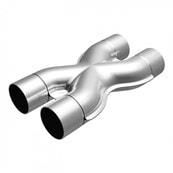
Is an “X” pipe design better than an “H” pipe?
Aftermarket exhaust manufactures have conducted extensive testing on various exhaust system designs and they have determined there are no significant performance difference between an X vs an H pipe design. There is however a noticeable difference in exhaust tones between the two designs. An X pipe will change the exhaust sound to a higher pitched exhaust tone.
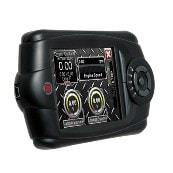
If I install an aftermarket engine tune with a handheld tuner, will my vehicle dealer know the vehicle has been tuned?
All handheld engine tuning manufacturers recommend returning your engine programming back to stock tune before taking your car, truck, or SUV into a factory dealership for service. One of the benefits of a handheld tuner is it’s easy to save several different tunes to the programmer so it’s easy to change your tune with a few clicks of a button. Also, most handheld tuners will not leave ghost data or a data footprint on the vehicle, so once the vehicles ECU is changed back to the factory the dealership will have no way to determine changes were ever applied to the ECM.
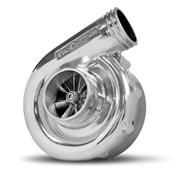
When considering a supercharger, what is the benefit of a centrifugal vs roots or screw-type supercharger?
There are many technical differences between a centrifugal and roots supercharger such as reversion and thermodynamics that could take a long time to explain. With that said, a simple comparison of the two supercharger styles is the difference between low-end power which drops off on positive displacement superchargers and the linear power provided by centrifugal style superchargers which increase engine rpm. Rather than working against the against the existing power band, the linear curve from a centrifugal supercharger compliments a motors existing power band. Another significant benefit of centrifugal superchargers is they have higher efficiency requiring a smaller amount of work to compress air than a roots supercharger. Centrifugal superchargers require less energy to make power and the power created by the supercharger is more usable power.
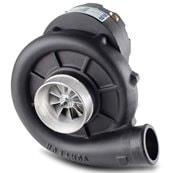
Why should I choose a supercharger over a turbocharger?
The biggest difference between a turbocharger and a supercharger is heat. The biggest enemy of the internal combustion engine is excessive heat. Too much heat can cause everything from engine detonation which occurs when a piston reaches top dead center and causes catastrophic engine failure, and premature wear on engine parts. A turbocharger uses extremely hot exhausts gases to spin the turbines used for air compression, when you route those hot gases around your motor, it will significantly raise the temperature under the hood. Another turbocharging byproduct is the significant increase in exhaust backpressure that is caused by a turbocharger. This makes it more difficult for exhaust gases to scavenge from the cylinder head of each compression cycle. It will also lower your engines overall efficiency. The combination of additional heat and backpressure forces you to either run lower boost or compensate by pulling timing in your tune which results in lower horsepower gains.
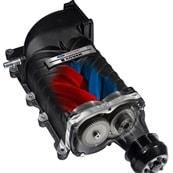
How will a supercharger impact my vehicles gas mileage?
The impact a supercharger has on your fuel economy is heavily depended on your driving habits. Many people who install a supercharger tend to develop a heavy foot due to the joy of driving a car, truck, or SUV with some serious horsepower and engine response. If you develop a lead foot, your fuel mileage is going to suffer. Heavy foot aside, under normal freeway driving when your supercharger is not under boost but is still increasing the efficiency of your motor by forcing air through normal restrictions like an air filter, you will actually enjoy a boost in fuel mileage.
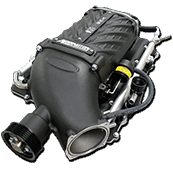
How will an aftermarket supercharger impact the life of my engine?
The longevity of your motor is heavily depended on how well your vehicle is maintained as well as your personal driving habits. If you maintain your vehicle properly and not abuse the motor by jamming on the accelerator every chance you get, your engine life should remain generally unaffected. A stock vehicle will even show signs of premature aging if not properly maintained and cared for. If you are running your vehicle in racing and towing conditions on a regular basis, the motors life will suffer.
A supercharger is simply a larger air pump that will improve the air density and flow into your engine. While under boost, the additional condensed air will require additional fuel to enrich the air fuel ratio in your combustion chamber. If you are experiencing detonation which can be identified by a pinging noise coming from your motor, it is a good indication that your vehicle is not tuned properly for the supercharger. Detonation typically results from a lean fuel condition, too aggressive of a timing curve, or lower octane fuel. If you push a motor that is experiencing detonation, you risk severe damage and reduced engine life.

